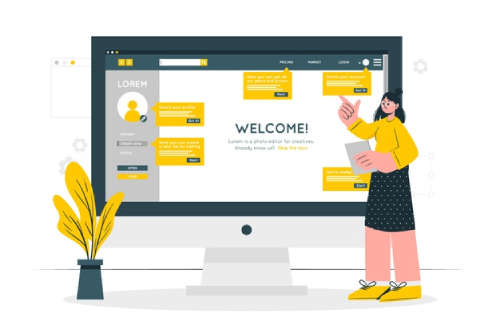9 Tips for Writing a Smart Brief for a Software Development Project
The brief sets the foundation for any software development project. It is a starting point that leads the project in the right direction. Here we are going to explore some valuable tips for writing a brief for a software development project.
The software development project brief is a relatively concise document that aims to outline the main idea and the vision behind the project. As it presents the goals, requirements, solutions, and more, the brief ensures that all parties involved are on the same page.
The better you write the brief and the more details you provide, you’ll eliminate the chances for misunderstandings and disagreements. If you want to speed up the process from the initial contact to a mutual agreement, a well-written brief can make that happen.
Apply the following tips to write a comprehensible brief that will help the developer understand your software development idea. These will surely help you write a software development project brief that serves its purpose.
1. Keep It Simple
Before we get to what your brief needs to consist of, let’s discuss how it should be written.
The brief should be simple, understandable, and direct. It should only include the necessary elements (which we’ll discuss below). The details of the software development project will be further discussed when you and the developers come to an agreement.
How to decide what you should and shouldn’t include in the brief? Ask yourself for every detail you want to write down: If I leave this out, will the developer understand what I expect from this project?

Your goal, when writing a software development brief, is to present the project with enough details that software developers understand what kind of task lies in front of them. But also, not too many that the brief loses its purpose.
Remember that software developers are expecting a brief – not a detailed software development project plan.
2. Introduce Your Company
The first element in the brief should be your introduction. Shorty explain what your business does.
Share information on the type of business you are in, the market you cover, and potentially your previous important software development projects. In this way, you’ll help the development company understand your needs.

The information you can include are:
- Company name
- Company website
- Type of professional activity
- City and country of your headquarters
- Corporate contact information (email and phone number)
- Previous relevant projects (optional)
3. Provide a Project Overview
The project overview should concisely present your expectations in terms of problems that need to be solved and goals that need to be met.
Help the software development company understand the purpose of this project. Why is it being undertaken?
Define the users’ problems that the software should resolve. How should it be helpful?
Overall, the points you can include in this section are:
- The type of software development (an app, a solution for maintenance of existing software, etc.)
- The main concept of the project
- Problems it will solve
- User benefits
- The final result
- Business benefits
To paint the picture of what your project presents, you can mention your competitors. The competitors’ cases can define what will make your project stand out. For example, you can clarify why you want to solve those specific issues by explaining that X and Y competitors don’t offer that solution.
You can also use your competitors’ software as an example of what you like and don’t like. The software solutions you admire and want to beat with your new project or the software solutions you don’t want (by any chance) in your software.
4. Define Target Persona
The target audience influences the look and feel of the software. They are the people whom you need to impress and win over. Therefore, if you want to put the focus on end-users, define the target persona.
Present the basic information about software users in your software development project brief such as:
- Demographics (age, gender, location, etc.)
- Their interests and preferences
- Their skills
- Their pain points
- The apps they typically use

Also, mention how they will access the software. If the software is available for both mobile and desktop use, which one does your target audience use more?
Embody all of these characteristics within a target persona to simplify this section. The target persona will present the audience you want to reach.
5. Write Down the Functionality Requirements
Explain to the development company how you want different elements of your software to function.
Functionality requirements define what needs to happen when users activate certain functions. For example, if you are developing a shopping app, state what the dropdown menu should do, the cart button, what happens when a user adds a product to the cart, and similar.
The functionality requirements will give insight into the software development company about the scope of work that awaits them. They’ll be able to understand how demanding their job will be.

Once you start writing about functionality requirements, you can get carried away and overdo it. Since you need to be concise when writing the brief, you can turn to the best writing help to help you edit lengthy sections and make it more comprehensive.
Bear in mind that you don’t need to have every functionality detail figured out. You’ll still communicate different ideas with developers and eventually make some changes. For now, simply define your expectations to showcase developers your software development idea.
6. Define Technical Requirements
Technical requirements refer to technical specifications and the platform that your software will run on.
Again, you don’t need to go deep into details. Provide some general information that will help developers figure out the tech stack.
The information you can share in this section is:
- The devices on which your software should run on
- Whether there is a need for data synchronization
- Whether this is a redesign or a completely new project
- Will the software work offline, online, or both
- Will the software be integrated (or provide integration possibility) with other software

Sharing this type of information will help developers evaluate how complex your project is. Technical requirements will affect other aspects of the project, such as the deadline and the budget, so you should present them upfront.
7. Set Non-Functional Requirements
Non-functional requirements define elements of the software development like security, performance, concurrent user load times, and auditing specifications.
Regardless of the type of software (web, app, or other), describing these non-functional requirements while writing a software development project brief can ensure that your software runs smoothly.
For example, if you don’t state that your software will be used by 200+ concurrent users, the user experience can be lessened as the software starts slowing down after too many concurrent users.
When developers have information on non-functional requirements, they’ll know what they need to test the software for.
In terms of security, some companies need to respect regulations within their industries (such as healthcare software and HIPAA regulations). Developers should know what kind of additional work they’ll need to cover because of non-functional requirements.
8. Express the Design Ideas
Do you have an idea of how you want the software to look visually? Describe the visual characteristics of your design.
If you have specific visuals in mind, share them in the brief. Mention the color scheme that aligns with your brand, audio materials that you want to use, pre-developed aspects of the software, etc. You can also attach mockups or exemplary cases.

Based on this, the software development company will take note of how much of the visual aspect is already defined.
9. Estimate the Deadline and Budget
Setting a specific date and budget in the brief for a software development project isn’t very realistic. Until you discuss all the details with the developers, you won’t know. Even then, the plans might change during development due to unexpected circumstances. HOWEVER, you can provide an estimate.
If you have a short deadline, the budget will be affected. The developers will need more people on their team, or they’ll need to work extra hours to meet that deadline – and that will cost.
Do keep in mind that matching a complex software development project with a scarce budget won’t get you far. Or expecting that the developers finish your project faster than they ever could. Be realistic and differentiate your desires from possibilities.
Final Thoughts
Writing a well-thought-out software development project brief based on these tips is all you need for a strong start. Be led by the thought to include information that will help developers understand the project. But also, leave the details to be discussed later on.
Of course, you have the final say on the information you want to include. Just be mindful of the people on the other side (software developers) and what they should know about the project before they decide that they want to be a part of it.



What a fantastic guide to crafting a smart brief for software development projects! Your tips are incredibly practical and insightful, offering a clear roadmap for ensuring project success from the outset. I appreciate how you emphasize the importance of clarity, specificity, and collaboration in creating a brief that effectively communicates project goals and requirements. By following your advice, I’m confident that both clients and development teams can streamline their communication, minimize misunderstandings, and ultimately deliver exceptional results. Thank you for sharing your expertise!